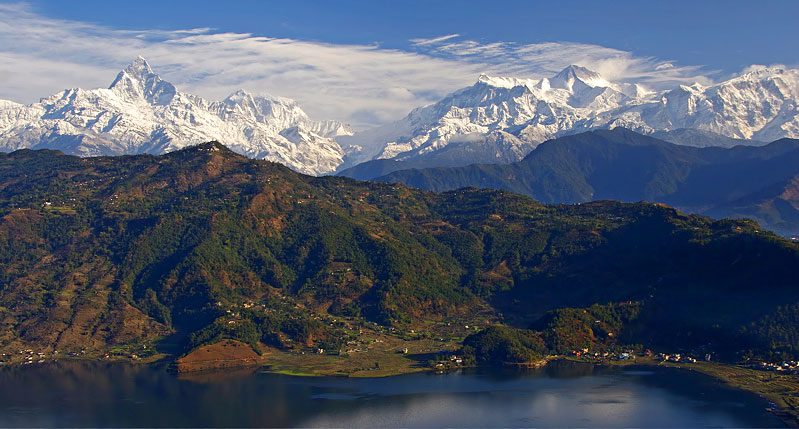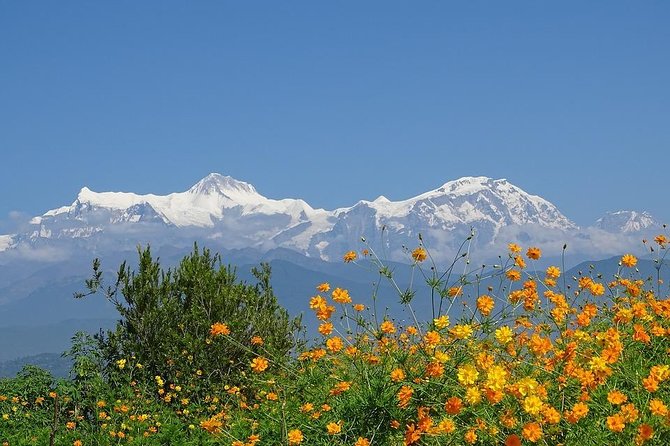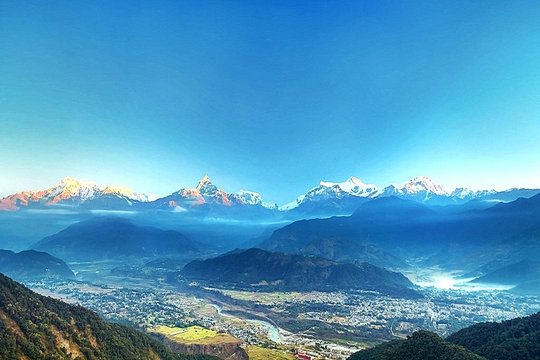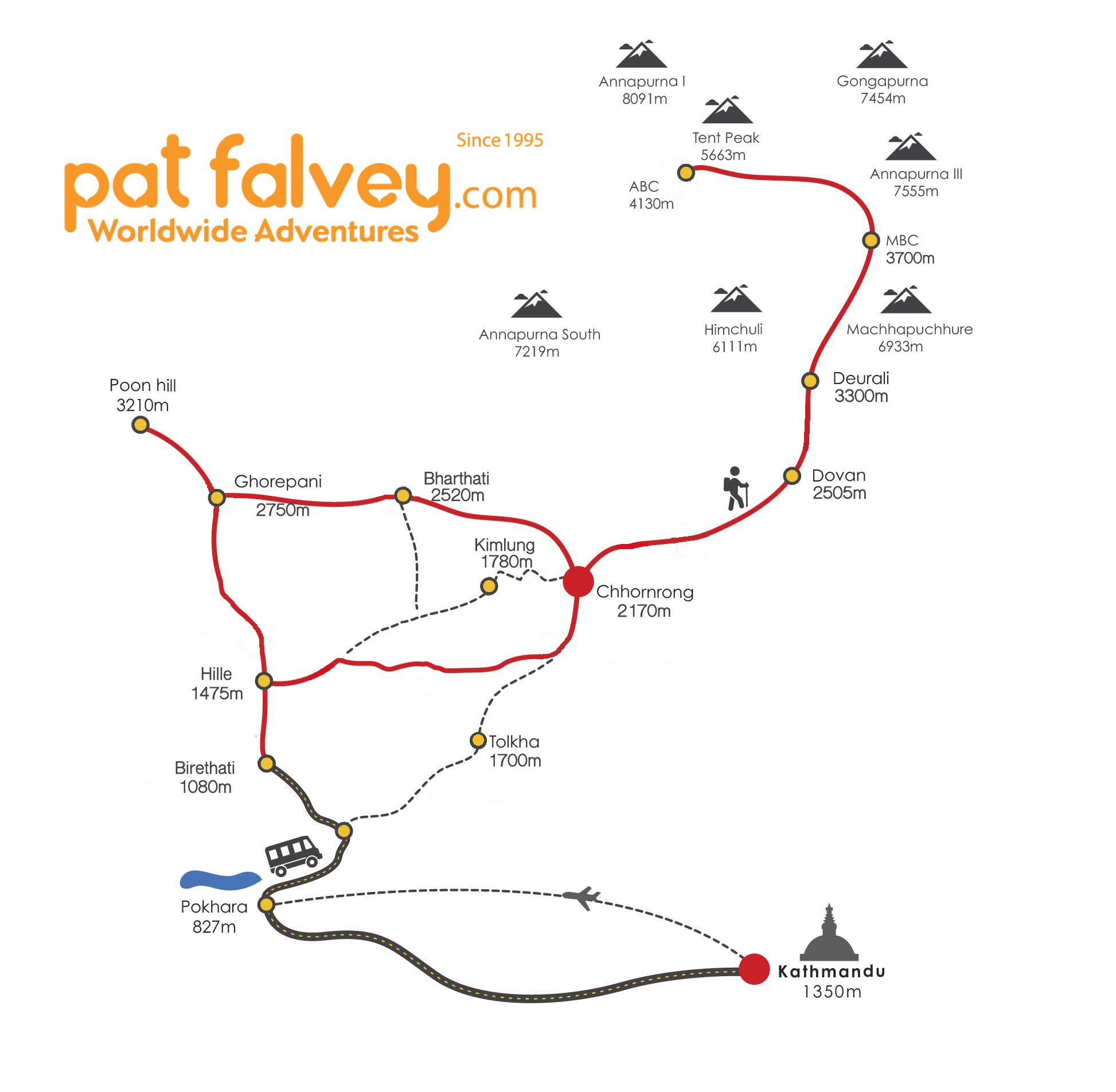Description
Annapurna Sanctuary Trek
- Trip: Annapurna Sanctuary Trek
- Altitude: 4,130m
- Route: Katmandu – Pokhara – Chhomrung – Macchapuchare – Annapurna – Ghorepani – Poon Hill – Pokhara – Katmandu
- Date: Between March and October are best
- Duration: 18 Days
- Grade: Trekking – Easy to Moderate
- Annapurna is a massif with multiple peaks.
- Its highest peak stands at 8000 metres.
- Breathtaking scenery on top of the world!
- Experience Nepalese culture and customs
- Expert local guides will look after you all along the way.
The Annapurna Sanctuary is a "high glacial basin lying forty kilometres directly north of Pokhara, Nepal's second city." This oval-shaped plateau sits at an altitude of over 4000 meters surrounded by a ring of mountains, the Annapurna range, most of which are over 7000 meters. With the only entrance a narrow pass between the peaks of Hiunchuli and Machapuchare, where run-off from glaciers drain into Modi Khola River, the Sanctuary was not penetrated by outsiders until 1956. Because of the high mountains on all sides, the Annapurna Sanctuary receives only 7 hours of sunlight a day at the height of summer. Annapurna Sanctuary gives rise to an extraordinary variety of ecosystems. The south-facing slope" is "covered in dense tropical jungles of rhododendron and ba "boo", while the north-facing slopes, in the rain shadow, h" ve "a drier colder climate similar to that of the near-by Tibetan Plat" au."
This beautiful trek mixes easily to moderate on pathways through beautiful local villages full of colour and charm—overall, a great short to medium walk in the stunning Annapurna Sanctuary.












